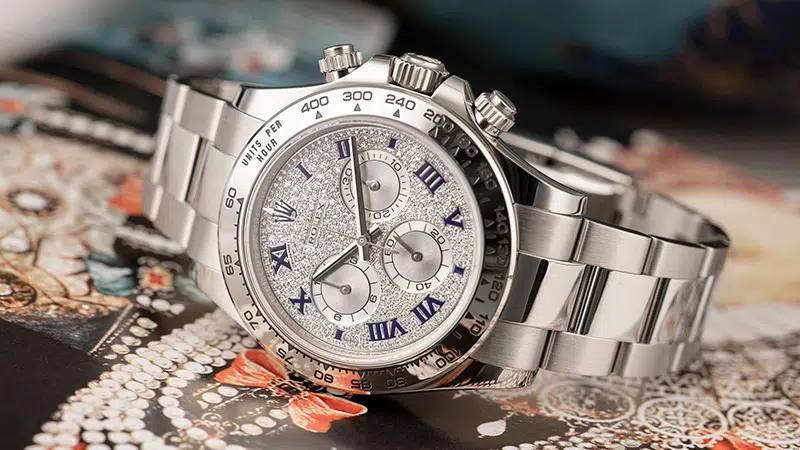Watches As Investment Pieces: What You Should Know
For centuries, watches have been far more than simple timekeeping devices. They carry with them a story of artistry, mechanical mastery, and personal expression. In recent decades, a growing number of people have started viewing watches not only as fashion accessories but also as serious investment pieces. While trends can shift, the value of a well-chosen watch can remain remarkably resilient, sometimes even appreciating over time. If you are considering venturing into watch collecting with an investment mindset, there are a few core aspects you should understand.
The Allure Of Timepieces As Assets
Unlike many modern possessions that depreciate quickly, certain watches carry intrinsic qualities that help them hold or even grow in value. A luxury watch represents the perfect marriage of engineering and craftsmanship, often taking months or even years to design and assemble. For collectors, this blend of precision and artistry is what gives a watch its enduring allure. Beyond its practical function, a fine watch tells a story — of the brand’s heritage, the hands that built it, and the culture that surrounds it.
Brand Prestige Matters
When it comes to investing in watches, the brand behind the piece plays a crucial role. Some names have long been synonymous with prestige, quality, and exclusivity. Watches produced by these manufacturers often enjoy consistent demand from collectors, ensuring that their resale value remains strong. While newcomers to the market may occasionally capture attention, established names have the advantage of decades — if not centuries — of reputation. This legacy assures buyers of reliability and desirability, two traits that influence how a watch performs as an investment.
Rarity And Exclusivity Drive Value
One of the strongest indicators of investment potential is a watch’s scarcity. Limited editions, discontinued models, or pieces produced in very small numbers are more likely to appreciate because of their rarity. Collectors often search tirelessly for models that are hard to find, creating a market where demand outpaces supply. In some cases, even minor differences in design, such as a dial colour or a specific engraving, can significantly influence a watch’s value over time. Exclusivity creates both mystique and competition among collectors, which keeps the market dynamic.
The Importance Of Condition And Authenticity
The physical condition of a watch cannot be overstated in its impact on value. A watch in perfect or well-preserved condition is much more likely to draw serious purchasers than one with scratches, changed parts, or excessive polishing. Just as critical is authenticity. Counterfeits are an unfortunate reality in the world of luxury watches, and distinguishing genuine pieces requires knowledge and sometimes professional verification. Documentation, including original boxes, certificates, and service records, adds an extra layer of trust and significantly strengthens a watch’s investment appeal.
Market Trends And Cultural Shifts
Like any investment, Mens Watches are influenced by cultural trends and broader economic conditions. For example, a celebrity endorsement or appearance in a popular film can suddenly propel demand for a specific model. Similarly, economic downturns can affect spending patterns, making the market more volatile in the short term. However, the best investment pieces tend to weather these fluctuations due to their timeless qualities. Keeping an eye on cultural moments and shifts in collector interest can help investors anticipate where demand may be headed.
Watches As Tangible, Wearable Wealth
Unlike stocks or digital assets, watches offer a unique combination of tangibility and utility. They are not only assets that can appreciate in value but also wearable expressions of personal style. This dual function makes them particularly attractive to investors who appreciate the artistry of horology. Owning a fine timepiece allows one to enjoy it on the wrist while also knowing it carries potential long-term financial benefits. In this way, watches represent a rare category of investment that bridges lifestyle and wealth.
Balancing Passion With Pragmatism
Perhaps the most rewarding aspect of watch investing is that it combines financial potential with personal passion. Unlike traditional assets, a watch investment is often driven by emotion and appreciation for design. That said, it’s important not to lose sight of pragmatism. Making decisions based solely on personal taste, without regard to market value, can result in poor investment choices. The most successful watch investors balance their passion for horology with a strategic eye for detail, history, and market dynamics. For collectors seeking trusted sources, House of Watches is often a go-to destination for finding both classic timepieces and modern investment-worthy models.
Conclusion: Time Well Spent
Watches as investment pieces embody a unique intersection of luxury, heritage, and financial strategy. They remind us that value can be measured not just in currency but also in craft and culture. By considering factors including market dynamics, uniqueness, condition, and brand reputation, investors can make well-informed decisions that last over time. Whether you are drawn to watches for their beauty, their story, or their potential returns, one truth remains clear: investing in timepieces is about more than money — it is about appreciating the art of time itself.
